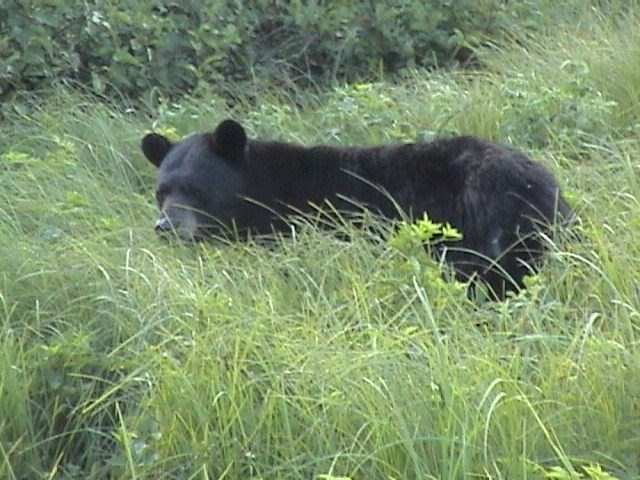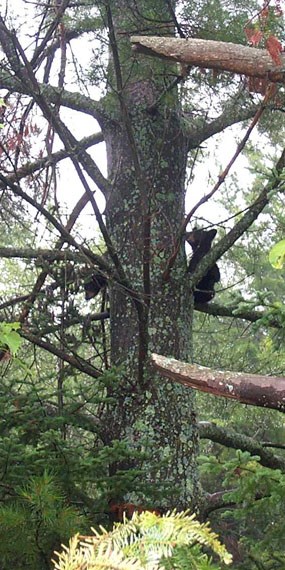Last updated: December 1, 2023
Article
Black Bears at the Apostle Islands

NPS photo

NPS photo
About Bears
Makwa - Black bears (Ursus americanus) are the most numerous and widespread North American bear. Though the black color phase is most common, "black" bears can also be various shades of brown or even white. Adult males usually weigh from 250 to 400 pounds, while females range from 150 to 225 pounds. They are omnivorous and depend greatly on their sense of smell to locate food. Bears can run as fast as 30 miles per hour. Their curved claws enable them to climb trees. They are also powerful swimmers, enabling them to utilize habitat available on the islands.

NPS photo
Island populations can grow rapidly from a single pair of individuals to very high densities, only to eventually crash. The Stockton Island population has been studied on and off for decades and may be going through this boom to bust cycle. Thought to have included only a single pair of bears in the 1970s, this population grew to a peak of 31 bears in 1994. The population appeared to be stable between the mid-1990s and 2002 with approximately 26 bears, but a 2010 study revealed the population has decreased by 50%, and the populations of sows (female bears) decreased 84%.
In contrast to Stockton Island, the bear population on Sand nearly doubled between 2002 and 2010 (from 6 to 10 bears) and the population of 18 bears on Oak island is exceptionally high. For many years Stockton was thought to have the highest population density in Wisconsin and among the highest in North America. That title has been passed to Oak Island, with Sand Island a close second. The next round of bear research began in 2020 and will continue through 2022. The current research greatly expands the Mainland research area and adds Basswood to the suite of sampled islands. It will be fascinating to see what this research reveals.
This information was obtained through DNA analysis of bear hair samples. Barbed wire snares were established on several islands at stations baited with fish oil-soaked logs to attract bears. When the bears investigated the bait, they left a sample of hair snared on the barbed wire. Scientists visited the snares on a regular basis to collect the hair samples for analysis. The analysis not only indicated the number bears on the islands but could also determine the sex of the bears and how closely they were related.
Bear safety
Never approach or feed a bear.
